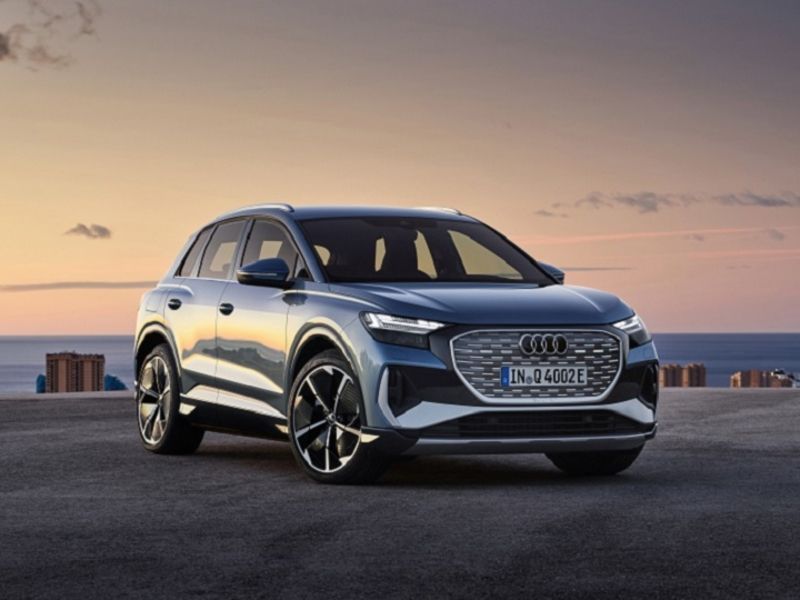
Audi is aiming at buyers in the upper end of the compact segment for full-electric vehicles with the Q4 e-tron unveiled Wednesday, while adding a key entry-level EV to the brand’s expanding lineup of battery-powered vehicles.
It’s the first Audi based on parent Volkswagen Group’s MEB electric-only platform that also underpins the VW ID3 compact hatchback and ID4 compact crossover.
The Q4 e-tron and the coupe-styled Q4 Sportback e-tron are built in VW’s plant in Zwickau, Germany, alongside the ID3 and ID4. Production started in March.
They have an 82-kilowatt-hour battery pack and two electric motors for a combined output of up to 295 hp and a range of up to 520 km (323 miles) under Europe’s WLTP tests. The EVs will rival the Tesla Model Y as well as more mainstream electric crossovers such as Nissan’s forthcoming Ariya.
The Q4 e-tron and Q4 Sportback e-tron are expected to arrive in the U.S. toward the end of the year, Audi said in a statement. Pricing for the Q4 e-tron is planned to start under $45,000.
The Q4 e-tron is 4590 mm (15 feet) long, slightly longer than the ID4, which is 4580 mm, but shorter than the Skoda Enyaq, also an MEB-based electric crossover, which is 4650 mm in length.
With their long wheelbases and short overhangs, the cabin space is similar in size to a large utility vehicle, Audi said. The more practical of the two, the Q4 e-tron, has a 520-liter trunk. Luggage space rises to 1,490 liters with the rear seats folded flat.
The design of both models is characterized by a prominent grille, big wheels and defined wheel arches. The styling gives each body a more sculptured look than the ID3 and ID4.
The Q4 e-tron models include the option of an augmented-reality head-up display. The same system is also available on the ID3 and ID4 and superimposes turn signals on the road ahead, which Audi says helps while driving in poor visibility.
The head-up display also helps with the adaptive cruise control assistance, which keeps the car centered in its lane. If the car approaches a lane marking without the turn signal having been activated, the lane departure warning display projected on the windshield superimposes a red line on the real-life lane marking.
The standard central touchscreen is 10.1 inches. An optional 11.6-inch screen will be available at the end of this year and will become the largest available in any Audi model. A 10.25-inch screen in front of the driver is also standard.
The seat material choices include a faux suede material called Dinamica made of 45 recycled plastics and polyesters. The optional Puls upholstery is a textile made with up to 50 percent recycled plastic bottles that are transformed into a yarn. Nappa leather is also available.
The Q4 e-tron will go on sale in Europe in June, with prices in Germany starting at 41,900 euros ($50,210). The Sportback version will cost 2,000 euros more.
Audi plans to expand its full-electric lineup to 20 models globally by 2025, CEO Markus Duesmann said in March. The brand’s first model on the PPE (Premium Platform Electric) architecture, which it has developed with Porsche, will be the Q6 e-tron arriving next year. The Q6 e-tron will be a sister model to the upcoming Porsche Macan EV.
Audi will use the platform for all its higher-end full-electric cars that are midsize or above, Audi CEO Markus Duesmann said at the brand’s annual press conference on March 18. Audi and Porsche plan to sell 7 million cars based on the PPE platform by 2030, Duesmann said.
The MEB architecture could be used for a small-segment EV for Audi, VW, Skoda that would be built by VW Group’s Seat unit in Spain.
Audi’s current full-electric cars, the e-tron, e-tron Sportback and e-tron GT are built on the same J1 platform as the Porsche Taycan.

